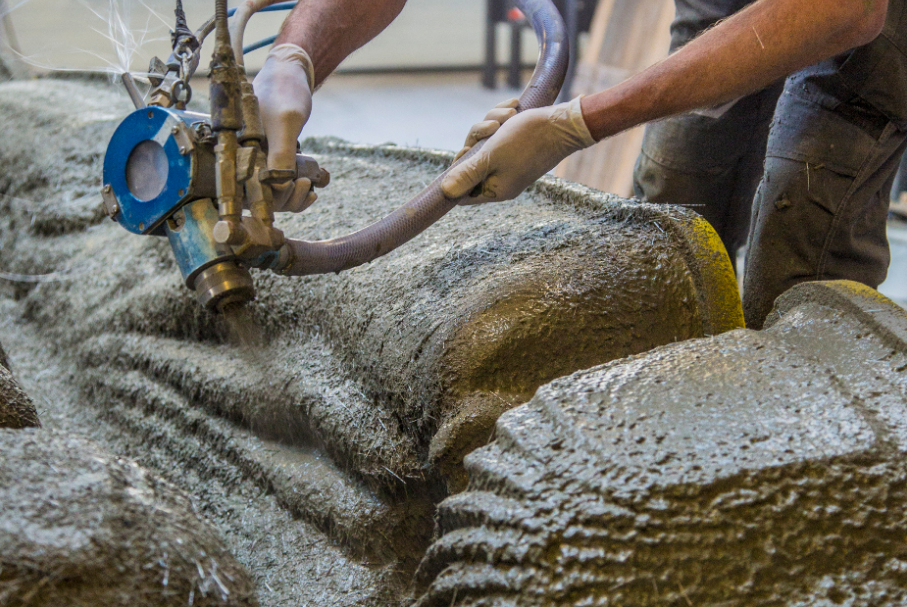Sika, the Swiss chemical giant, announced a joint investment with PERI Group, one of the world’s largest formwork and scaffolding makers. The two multinationals are investing in a Swiss robotic arm startup, called Mesh AG, inventor of the world’s first robot-assisted technology capable of creating reinforced concrete structures without using conventional formwork.
Mesh started out as a research project, spanning the course of 10 years, at ETH Zurich, one of the world’s most respected research institutions. PERI Group is a partner of, and investor in, COBOD, the largest additive construction (AC) firm in the world, while Sika introduced its first concrete printer about a year ago. Thus, while MESH Technology (as the company has branded its proprietary robotics system) is not itself an AC application, it nonetheless has clear potential to be combined with AC applications, and in turn, helps expand the horizon for what can be done with automated digital construction.

In a press release, Philippe Jost, Head of Construction at Sika, commented, “Increasing digitalization and automation is becoming more important in the construction industry. Innovative technologies enable productivity increases in construction and open new design possibilities for architects. Through our collaboration with Mesh AG and PERI, a new type of construction process is being established on the market that enables the production of complex geometries and is more cost-effective than conventional methods.”

In fact, the first major use of MESH Technology was on the DFAB House, a three-story building in New York City, built by a team from ETH Zurich. The DFAB House, which broke ground in 2017 and was completed in 2019, set a precedent as the first successful construction project to combine use of multiple digital construction technologies. In other words, while it can certainly be used without concrete printers, it was designed to be used synergistically with them.
In addition to the cages that MESH Technology produces serving as reinforcements for concrete walls, the cages can also be used as formwork, themselves. Moreover, the unique shapes the robotic arm is able to fabricate could give architects a much wider range of design options.
The potential for AC to take off depends not just on the state of the technology on its own, but equally, on how the technology can be integrated with the rest of the construction industry. The more that the industry digitizes in general, then, the easier it will be for concrete printing to become the focal point for the future of construction. Among other reasons, this would be enhanced especially by the addition of something like MESH Technology because it allows builders using AC to remain flexible in relation to conventional construction supply chains. Along these lines, it is quite notable that the world’s largest formwork manufacturer sees such an upside to investing in an alternative to conventional formwork methods.
Subscribe to Our Email Newsletter
Stay up-to-date on all the latest news from the 3D printing industry and receive information and offers from third party vendors.
You May Also Like
Gorilla Sports GE’s First 3D Printed Titanium Cast
How do you help a gorilla with a broken arm? Sounds like the start of a bad joke a zookeeper might tell, but it’s an actual dilemma recently faced by...
Nylon 3D Printed Parts Made More Functional with Coatings & Colors
Parts 3D printed from polyamide (PA, Nylon) 12 using powder bed fusion (PBF) are a mainstay in the additive manufacturing (AM) industry. While post-finishing processes have improved the porosity of...
$25M to Back Sintavia’s Largest Expansion of Metal 3D Printing Capacity Since 2019
Sintavia, the digital manufacturing company specializing in mission-critical parts for strategic sectors, announced a $25 million investment to increase its production capacity, the largest expansion to its operations since 2019....
Velo3D Initiates Public Offering in a Bid to Strengthen Financial Foundations and Drive Future Growth
Velo3D (NYSE: VLD) has been among a number of publicly traded 3D printing firms that have attempted to weather the current macroeconomic climate. After posting a challenging financial report for 2023,...































